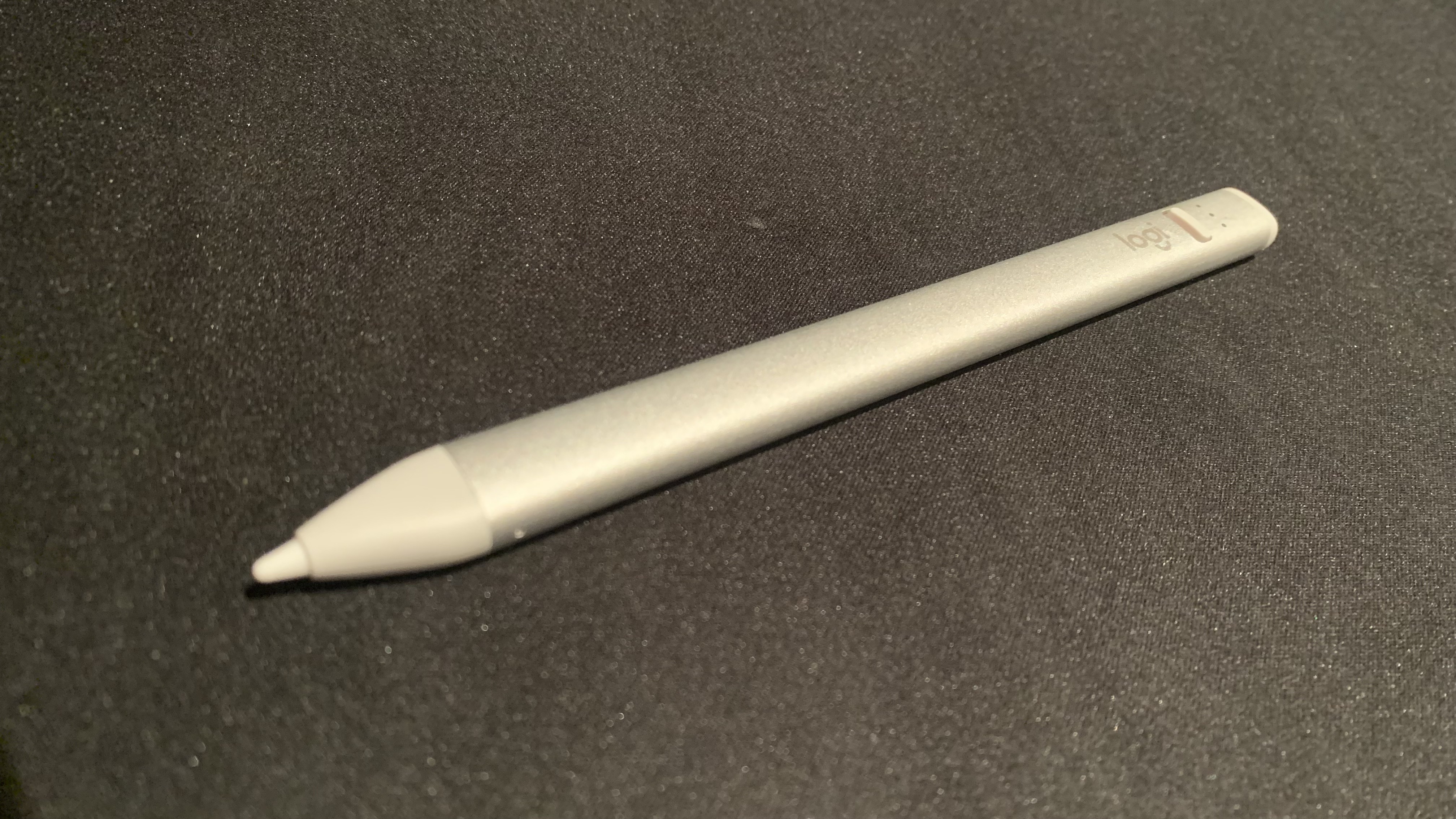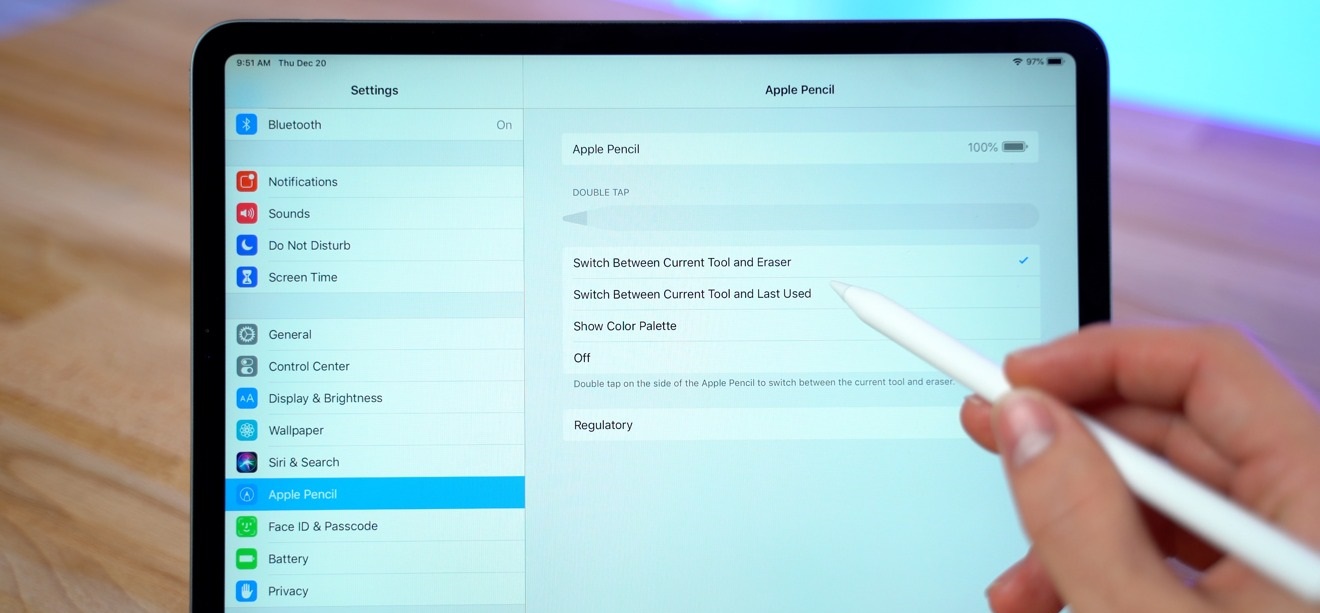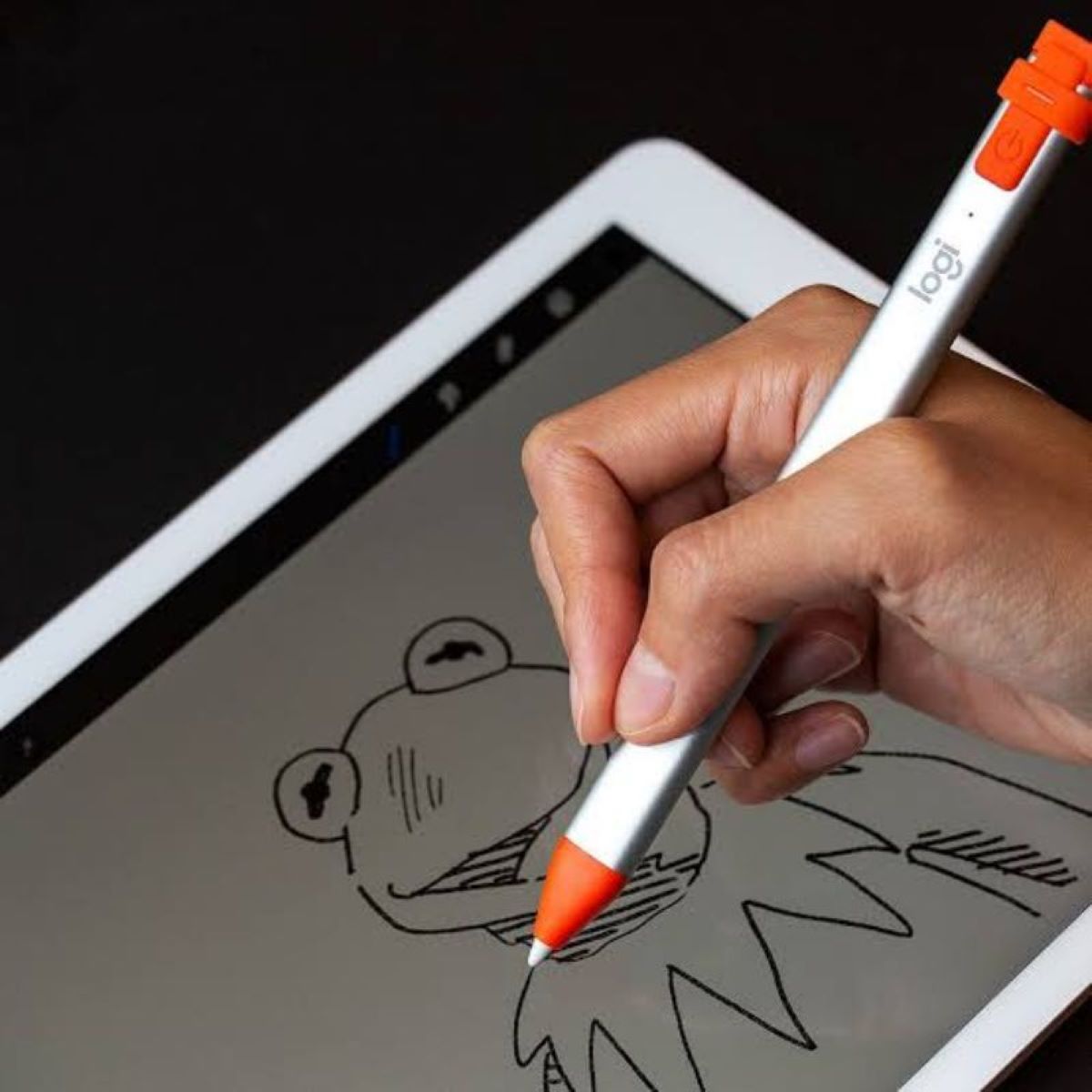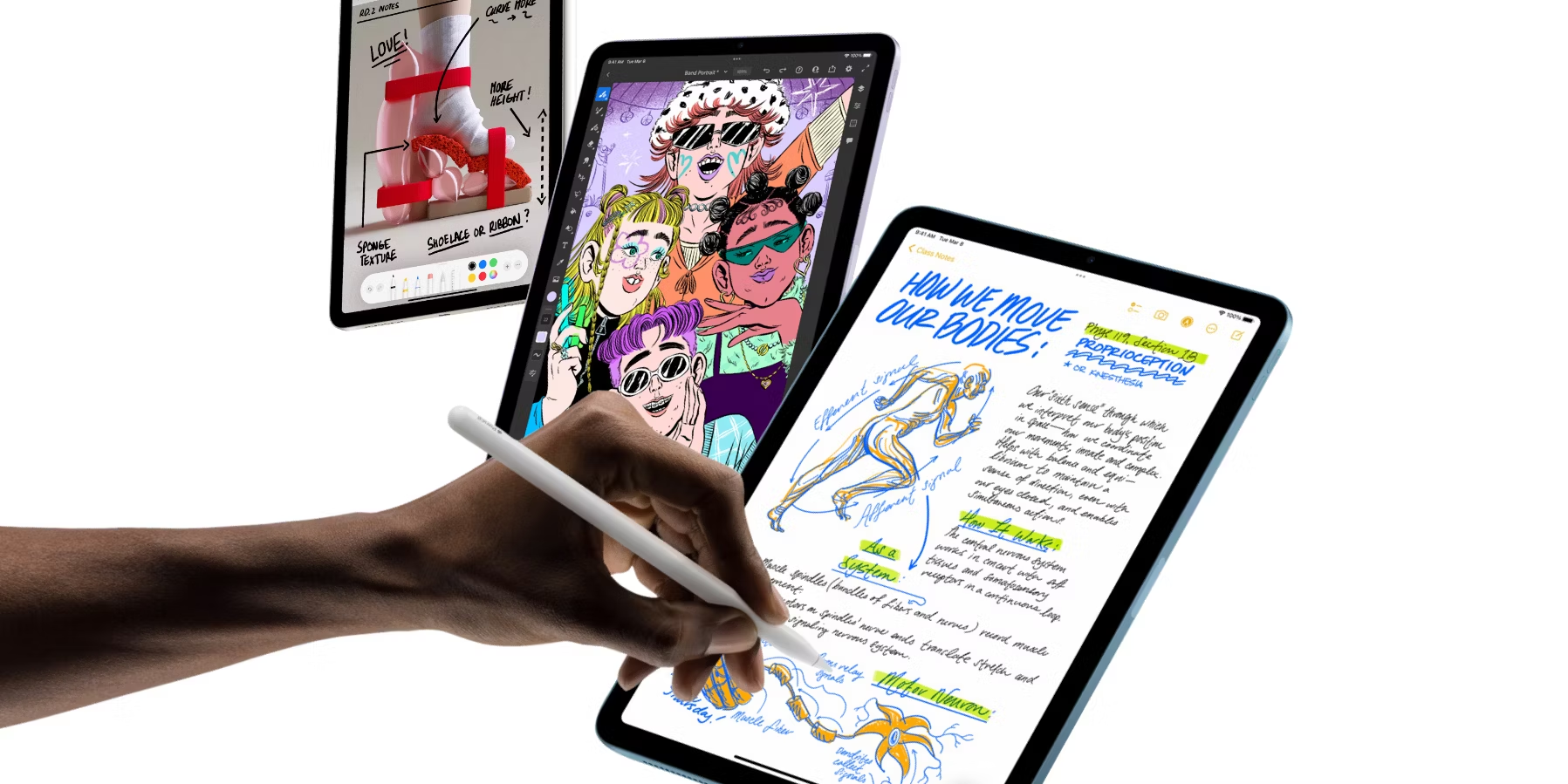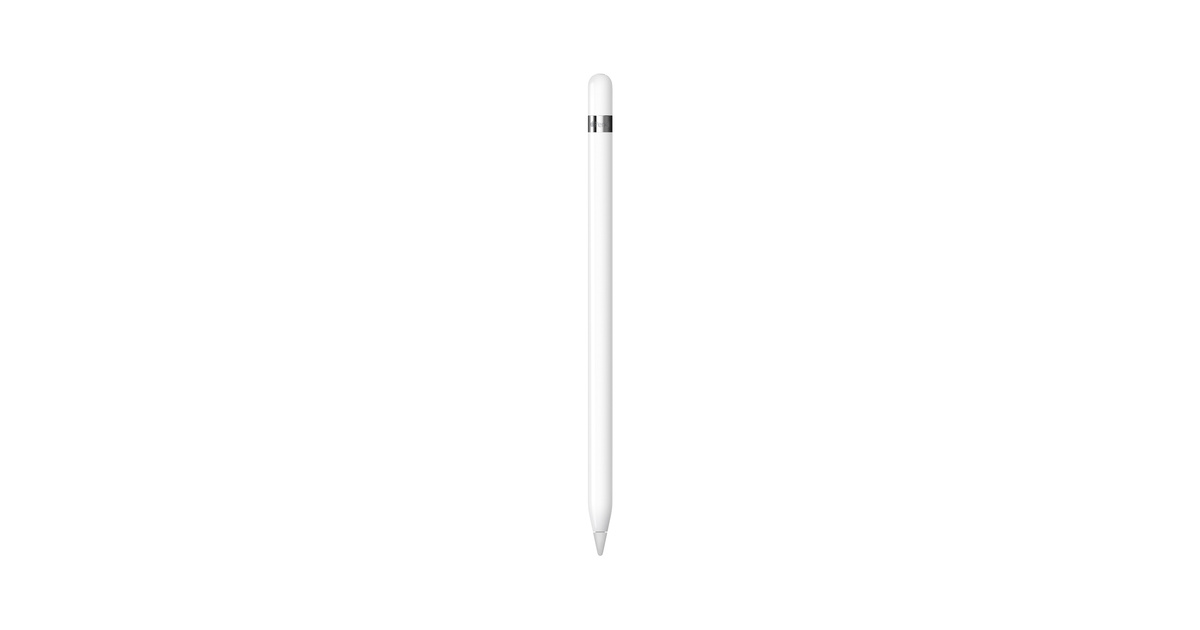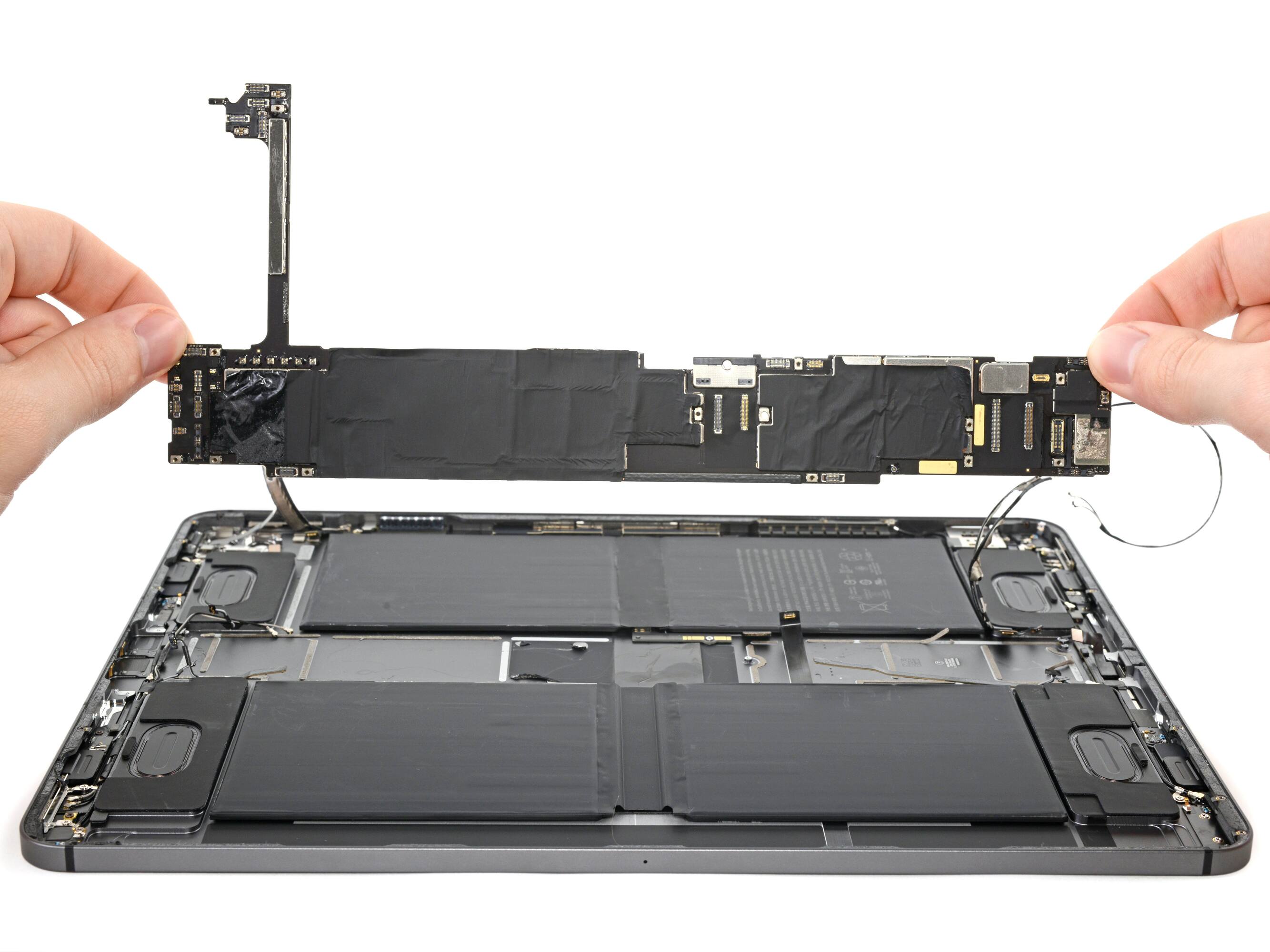Introduction
Welcome to our article on the topic of Apple Pencil lag. Apple Pencil is a revolutionary tool for artists, designers, and note-takers, providing precision and fluidity in digital creations. However, some users have experienced frustrating delays or lags when using their Apple Pencil, which can hinder their creative workflow and overall user experience. In this article, we will explore the possible reasons behind Apple Pencil lag and provide you with some solutions to help alleviate this issue.
Apple Pencil lag refers to the delay or sluggish response that occurs when using the Apple Pencil with an iPad or iPad Pro. Instead of the smooth and immediate response expected from a high-quality stylus, users may notice a slight delay between their strokes and the appearance of those strokes on the screen. This lag can be discouraging and make the Apple Pencil feel less intuitive and precise.
If you’ve encountered Apple Pencil lag, you’re not alone. Many users have reported this issue, especially when using certain apps or in specific circumstances. While there can be various factors contributing to Apple Pencil lag, the most common ones include outdated software, hardware limitations, connectivity issues, and environmental factors.
In the following sections, we will delve deeper into each of these factors and explore possible solutions to help you overcome Apple Pencil lag. By addressing these issues, you can enhance your Apple Pencil experience and enjoy smooth, seamless drawing and writing on your iPad.
What is Apple Pencil Lag?
Before we delve into the reasons behind Apple Pencil lag, it’s important to understand what exactly it refers to. Apple Pencil lag is the delay or lagging response that occurs when using an Apple Pencil with an iPad or iPad Pro.
When you use the Apple Pencil, you expect smooth, fluid motions and precise input on the screen. However, in some cases, you may notice a slight delay between your strokes or movements and the corresponding appearance on the screen. This lag can make your drawing or writing experience feel less responsive and may hinder your overall productivity.
Apple Pencil lag can manifest in different ways. It may result in slower recognition of your strokes, visible gaps in lines or letters, or a noticeable delay between your movements and the response on the screen. These issues can be frustrating for artists trying to create detailed artwork or for professionals who rely on precise note-taking or markup.
It’s worth noting that Apple Pencil lag is not a constant issue for all users. It may occur sporadically, depending on various factors such as the app being used, the iPad model, or even the specific settings and conditions at the time of usage.
Understanding the nature of Apple Pencil lag is crucial for finding effective solutions. In the following sections, we will explore the possible reasons behind Apple Pencil lag and provide you with practical steps to troubleshoot and minimize this issue. By addressing these factors, you can optimize your Apple Pencil experience and achieve smooth, responsive input on your iPad.
Reasons for Apple Pencil Lag
Apple Pencil lag can have several underlying causes that contribute to its occurrence. Understanding these reasons can help you identify the source of the lag and take appropriate measures to alleviate the issue. Let’s explore some common reasons for Apple Pencil lag.
1. Outdated Software: One of the primary reasons for Apple Pencil lag is outdated software on your iPad or iPad Pro. Operating system updates often include optimizations and fixes that improve the performance and responsiveness of the Apple Pencil. Ensuring that you have the latest software updates installed is essential in mitigating lag issues.
2. Hardware Limitations: While the Apple Pencil is designed to provide seamless functionality, certain hardware limitations can contribute to lag. Older iPad models or models with limited processing power may struggle to keep up with the demands of the Apple Pencil, resulting in delays in response and accuracy.
3. Connectivity Issues: Connectivity problems between the Apple Pencil and your device can also lead to lag. Improper pairing, low battery levels, or interference from other devices can disrupt the connection, causing delays or interruptions in the input. Ensuring a stable and strong connection between your Apple Pencil and iPad is crucial for optimal performance.
4. Environmental Factors: External factors can also play a role in Apple Pencil lag. Factors such as extreme temperatures, humidity, or magnetic interference from nearby devices can affect the performance of the Apple Pencil. It’s important to consider the environment in which you are using your Apple Pencil and make any necessary adjustments.
By identifying the specific reasons behind Apple Pencil lag, you can take targeted steps to resolve or minimize the issue. In the subsequent sections, we will delve into practical solutions to help you address each of these reasons and optimize the performance of your Apple Pencil.
Outdated Software
One of the common culprits behind Apple Pencil lag is outdated software on your iPad or iPad Pro. Apple frequently releases software updates that include optimizations and bug fixes to enhance the performance of their devices, including the Apple Pencil.
If you’re experiencing lag with your Apple Pencil, the first step is to check if you’re running the latest software version on your iPad. To do this, follow these simple steps:
1. Check for Updates: Open the “Settings” app on your iPad and go to “General.” From there, tap on “Software Update” to see if any updates are available. If there is an update available, make sure to download and install it.
2. Restart Your iPad: After updating the software, it’s a good idea to restart your iPad. This helps refresh the system and clears any temporary glitches that might be causing Apple Pencil lag.
Updating the software on your iPad not only ensures you have the latest features, but it can also address any software-related issues that may be affecting the performance of your Apple Pencil. In some cases, a software update alone can significantly improve the responsiveness and reduce lag.
It’s worth noting that sometimes, beta software versions can introduce compatibility issues with third-party accessories like the Apple Pencil. If you’re participating in a beta testing program, it’s possible that the lag could be a result of the beta software. In such cases, switching back to the stable release version of the software may be necessary to resolve the issue.
By ensuring that your iPad is running the latest software version and keeping it updated, you can help minimize Apple Pencil lag and improve overall performance. However, if you’re still experiencing lag after updating the software, it’s important to explore other potential reasons, which we will discuss in the following sections.
Hardware Limitations
While the Apple Pencil is designed to work seamlessly with compatible iPad models, it’s important to consider the hardware limitations that may contribute to lag issues. Different iPad models have varying levels of processing power and capabilities, which can affect the performance of the Apple Pencil.
If you’re experiencing Apple Pencil lag, it’s worth considering whether your iPad model is capable of fully supporting the Apple Pencil and its advanced features. Older iPad models or those with lower processing power may struggle to keep up with the demands of the Apple Pencil, resulting in delays or reduced responsiveness.
To determine if hardware limitations are causing the lag, consider the following factors:
1. iPad Model: Check the specifications of your iPad model and compare them to the recommended requirements for using the Apple Pencil. Newer iPad models, such as the iPad Pro, typically offer better hardware capabilities and are optimized for use with the Apple Pencil.
2. RAM and Storage: Insufficient RAM or storage space on your iPad can also affect the performance of the Apple Pencil. Make sure you have enough available storage and consider closing unnecessary background apps or files to free up system resources.
3. App Compatibility: Some apps may require more processing power or have specific compatibility requirements for optimal Apple Pencil performance. Check if there are any known issues or recommendations from the app developers regarding Apple Pencil compatibility and performance.
If you determine that hardware limitations are the cause of the Apple Pencil lag, you may need to consider upgrading to a newer iPad model with better specifications. While it may involve a financial investment, upgrading to a more powerful iPad can significantly improve the performance of your Apple Pencil and enhance your overall drawing, writing, and note-taking experience.
However, if upgrading is not feasible, there may still be some solutions to mitigate the lag. In the next sections, we will explore other potential reasons for Apple Pencil lag and provide you with troubleshooting steps that can help improve the performance of your Apple Pencil, regardless of your iPad model.
Connectivity Issues
Another factor that can contribute to Apple Pencil lag is connectivity issues between your Apple Pencil and your iPad. A stable and reliable connection is essential for seamless communication and optimal performance. Here are some common connectivity issues to consider:
1. Pairing and Bluetooth: Ensure that your Apple Pencil is properly paired with your iPad. Go to the Bluetooth settings on your iPad and check if the Apple Pencil is connected. If it’s not, try pairing it again by plugging the Apple Pencil into the charging port of your iPad, or if you have a newer model, attach it magnetically to the iPad’s side. Follow the on-screen prompts to complete the pairing process.
2. Low Battery: A low battery level in your Apple Pencil can lead to lag or unresponsiveness. To check the battery level, swipe down from the top-right corner of your iPad screen to access the Control Center. Look for the Apple Pencil battery indicator. If it’s low, charge your Apple Pencil using the Lightning connector or by attaching it to the iPad for a few minutes to initiate charging.
3. Interference: Bluetooth interference from other devices or sources can disrupt the connection between your Apple Pencil and iPad, leading to lag. Keep your iPad away from other electronic devices that may cause interference, such as wireless speakers, wireless headphones, or other Bluetooth devices. Additionally, avoid using the Apple Pencil in areas with high electromagnetic interference, such as near microwaves or strong Wi-Fi routers.
4. Check for Updates: Apple occasionally releases firmware updates for the Apple Pencil to improve its performance and connectivity. Check if there are any updates available for your Apple Pencil. To do this, make sure your iPad is connected to the internet, go to the “Settings” app, select “General,” and then tap on “Software Update.” If an update for the Apple Pencil is available, follow the on-screen instructions to install it.
If you’ve addressed these connectivity issues and are still experiencing lag, try disconnecting and reconnecting the Apple Pencil from your iPad to establish a fresh connection. You can do this by unplugging and reinserting the Apple Pencil or detaching and reattaching it magnetically. This can help recalibrate the Bluetooth connection and potentially resolve any connection-related issues.
By troubleshooting the connectivity between your Apple Pencil and iPad, you can minimize or eliminate lags caused by communication issues and ensure a smooth and responsive experience with your Apple Pencil.
Environmental Factors
Environmental factors can also play a role in Apple Pencil lag. Certain external conditions can impact the performance of the Apple Pencil and lead to delays or reduced responsiveness. Here are some environmental factors to consider:
1. Temperature and Humidity: Extreme temperatures and high humidity levels can affect the sensitivity and accuracy of the Apple Pencil. Exposing the Apple Pencil to extremely hot or cold temperatures or excessive moisture can cause lag or unresponsiveness. It’s advisable to use the Apple Pencil within the recommended temperature and humidity range specified by Apple.
2. Magnetic Interference: Magnetic interference from other devices or accessories in close proximity to your iPad can disrupt the communication between the Apple Pencil and the iPad. Remove any magnetic cases, covers, or attachments and ensure that there are no strong magnetic fields nearby when using the Apple Pencil.
3. Display Protection: The presence of a screen protector or protective film on your iPad’s display can potentially introduce a slight gap between the Apple Pencil tip and the screen surface. This gap can cause a delay in touch response and result in lag. Consider removing the screen protector or ensuring that it is specifically designed for use with the Apple Pencil to minimize any interference.
4. Lighting Conditions: The lighting conditions in your environment can affect the visibility and accuracy of your Apple Pencil strokes. Poor lighting, glare, or reflections on the screen can make it challenging to see your drawings or notes clearly, potentially leading to errors and lag. Find a well-lit area with appropriate lighting to optimize your Apple Pencil experience.
By taking these environmental factors into account, you can create an ideal working environment for your Apple Pencil. Minimizing the impact of temperature, humidity, magnetic interference, and lighting conditions can contribute to a smoother and more responsive experience with your Apple Pencil, reducing the occurrence of lag.
In the next section, we will provide you with practical solutions and troubleshooting steps to help address Apple Pencil lag and enhance its performance, regardless of the underlying reason.
How to Fix Apple Pencil Lag
If you’re experiencing Apple Pencil lag, there are several steps you can take to troubleshoot and resolve the issue. Here are some practical solutions to help improve the performance and responsiveness of your Apple Pencil:
1. Update Your Software: Ensure that your iPad is running the latest software version. Go to the “Settings” app, select “General,” and tap on “Software Update.” If an update is available, download and install it. Keeping your software up to date can address any known issues and improve compatibility with the Apple Pencil.
2. Try Resetting Your iPad and Pencil: Sometimes, resetting your iPad and Apple Pencil can help resolve intermittent issues. To reset your iPad, press and hold the power button and the volume down button simultaneously until the Apple logo appears. To reset your Apple Pencil, go to the Bluetooth settings on your iPad, locate the Apple Pencil in the list of devices, and tap on the “i” icon. Then, select “Forget this Device” and confirm the action. Pair the Apple Pencil again by plugging it into the charging port or attaching it magnetically.
3. Check for Interference: Ensure that there are no strong magnetic fields or other electronic devices in close proximity to your iPad when using the Apple Pencil. Magnetic interference can disrupt the connection and cause lag. Also, remove any screen protectors or protective films that may introduce a gap between the Apple Pencil tip and the screen surface.
4. Adjust Environmental Factors: Optimize your working environment by ensuring appropriate lighting conditions and avoiding extreme temperatures and high humidity levels. Find a well-lit area that provides clear visibility of your screen, and use the Apple Pencil within the recommended temperature and humidity range specified by Apple.
5. Contact Apple Support: If you have tried the above steps and are still experiencing significant Apple Pencil lag, it may be worth reaching out to Apple support for further assistance. They can provide personalized guidance and solutions specific to your situation.
By following these troubleshooting steps, you can address common issues that contribute to Apple Pencil lag and improve its performance. Remember to consider both software and hardware factors, connectivity issues, and environmental considerations. With a little patience and persistence, you can enhance your Apple Pencil experience and enjoy a seamless and responsive creative workflow.
Update Your Software
One of the first steps in resolving Apple Pencil lag is to ensure that your software is up to date. Regular software updates from Apple often include optimizations and bug fixes that can improve the performance and compatibility of the Apple Pencil.
To update your software, follow these steps:
- 1. Check for Updates: Open the “Settings” app on your iPad and go to “General.”
- 2. Software Update: Tap on “Software Update” to see if there are any available updates for your iPad.
- 3. Download and Install: If an update is available, tap on “Download and Install” to begin the update process. Note that you may need to connect to a Wi-Fi network and have sufficient battery charge to download and install the update.
Updating your software can address any known issues or bugs that may be causing Apple Pencil lag. It can also improve the overall performance and responsiveness of your iPad, making it a crucial step in troubleshooting the issue.
In addition to updating the iOS or iPadOS, it’s also important to ensure that the specific app or apps you’re using with the Apple Pencil are up to date. App developers often release updates that provide better compatibility and optimize the functionality of the Apple Pencil. To update your apps, open the App Store, go to the “Updates” tab, and tap on “Update” next to the relevant app.
After updating both the software and the apps, it’s a good idea to restart your iPad. This helps refresh the system and clear any temporary glitches that may affect the performance of the Apple Pencil. To restart your iPad, press and hold the power button until the “Slide to Power Off” slider appears. Then, swipe the slider to the right to turn off your iPad. Once it’s off, press and hold the power button again until the Apple logo appears, indicating that your iPad is restarting.
By keeping your software up to date and ensuring that your apps are also updated, you can optimize the performance of your Apple Pencil and reduce lag. However, if updating the software does not completely resolve the issue, there may be other factors contributing to Apple Pencil lag, which we will address in the following sections.
Try Resetting Your iPad and Pencil
If you’re experiencing Apple Pencil lag, one troubleshooting step you can try is resetting both your iPad and Apple Pencil. This can help resolve any temporary glitches or conflicts that may be affecting the performance of the Apple Pencil.
Follow these steps to reset your iPad and Apple Pencil:
- 1. Reset Your iPad: Press and hold the power button and the volume down button simultaneously until the Apple logo appears on the screen. This initiates a restart of your iPad and clears the system memory.
- 2. Reset Your Apple Pencil: Go to the Bluetooth settings on your iPad. Locate the Apple Pencil in the list of devices and tap on the “i” icon next to it. From the options that appear, select “Forget this Device” and confirm the action. This removes the Apple Pencil from the list of paired devices.
- 3. Reconnect Your Apple Pencil: To reconnect your Apple Pencil, plug it into the charging port of your iPad or attach it magnetically if you have a compatible iPad model. Follow the on-screen prompts to pair the Apple Pencil with your iPad.
Resetting your iPad and Apple Pencil can help recalibrate the connection and settings, resolving any minor issues that may be causing Apple Pencil lag. It clears any temporary data or conflicts that may have accumulated, restoring the system to a fresh state.
After resetting your iPad and reconnecting the Apple Pencil, test it in various applications to see if the lag has improved. Monitor its performance and responsiveness to determine if the reset has resolved the issue.
It’s worth noting that resetting the iPad and Apple Pencil should be considered a troubleshooting step and not a permanent solution. If the lag persists after the reset, further investigation into other potential causes is needed, which we will discuss in subsequent sections.
If you’re unsure about performing a reset or if you have concerns about potentially losing data, it’s always a good idea to backup your iPad before proceeding. This ensures that your data is safely stored and can be restored if needed.
In the next sections, we will explore additional troubleshooting steps to address Apple Pencil lag and improve its performance.
Check for Interference
Interference from external devices or sources can disrupt the connection between your Apple Pencil and your iPad, leading to lag or connectivity issues. It’s important to identify and mitigate any potential sources of interference to ensure optimal performance. Here are some steps to check for and address interference:
1. Magnetic Interference: Magnetic fields from other devices or accessories in close proximity to your iPad can interfere with the Apple Pencil’s communication and cause lag. Remove any magnetic attachments or cases from your iPad and create some distance between the iPad and other devices that generate strong magnetic fields.
2. Wireless Interference: Other wireless devices operating on similar frequencies can also interfere with the Apple Pencil’s Bluetooth connection. Keep your iPad away from devices like wireless speakers, wireless headphones, or other Bluetooth-enabled accessories that may cause interference.
3. Bluetooth Pairing: Ensure that your Apple Pencil is properly paired with your iPad. Go to the Bluetooth settings on your iPad and check if the Apple Pencil is listed as a connected device. If it’s not, try pairing it again by plugging it into the charging port of your iPad or attaching it magnetically. Follow the on-screen prompts to complete the pairing process.
4. Battery Level: A low battery level in your Apple Pencil can contribute to lag or unresponsiveness. To check the battery level, swipe down from the top-right corner of your iPad screen to access the Control Center. Look for the Apple Pencil battery indicator. If it’s low, charge the Apple Pencil using the Lightning connector or by attaching it magnetically to the iPad for a few minutes to initiate charging.
5. Firmware Updates: Apple occasionally releases firmware updates for the Apple Pencil to improve its performance and connectivity. Ensure that your Apple Pencil is running the latest firmware. To check for updates, go to the “Settings” app on your iPad, select “General,” and tap on “About.” From there, select “Apple Pencil” to check for any available updates.
By addressing potential interference, you can establish a stable and uninterrupted connection between your Apple Pencil and your iPad, minimizing lag and ensuring a smooth drawing or writing experience. Keep in mind that different environments and usage scenarios may introduce unique interference sources, so it’s important to be mindful of your specific surroundings and adjust as necessary.
If the interference issue persists or if you have other concerns regarding Apple Pencil lag, continue reading the subsequent sections for further troubleshooting steps.
Adjust Environmental Factors
Environmental factors can have an impact on the performance of your Apple Pencil. By making some adjustments to your working environment, you can minimize potential issues that may contribute to Apple Pencil lag. Here are some considerations for optimizing your environment:
1. Lighting Conditions: Adequate lighting is important for a clear view of your screen while using the Apple Pencil. Insufficient or uneven lighting can make it difficult to see your strokes or notes accurately, potentially resulting in lag. Find a well-lit area, preferably with natural light or evenly distributed artificial lighting, to enhance visibility and reduce any strain on your eyes.
2. Temperature and Humidity: Extreme temperatures and high humidity levels can affect the sensitivity and performance of the Apple Pencil. It’s advisable to use the Apple Pencil within the recommended temperature and humidity ranges specified by Apple. Avoid exposing the Apple Pencil to direct sunlight or excessive moisture, as these conditions can cause erratic behavior or lag.
3. Magnetic Interference: Magnetic fields from other devices or accessories can interfere with the communication between your Apple Pencil and your iPad. Remove any magnetic cases or attachments from your iPad, as they may introduce unwanted interference. Keeping your iPad away from strong magnetic sources, such as speakers or certain types of chargers, can also help reduce interference.
4. Screen Protection: If you’re using a screen protector or protective film on your iPad’s display, ensure that it’s specifically designed for use with the Apple Pencil. Poor-quality or incompatible screen protectors may introduce a gap or uneven surface, leading to lag or reduced responsiveness. Consider using high-quality screen protectors that provide a smooth and responsive experience with the Apple Pencil.
5. Workspace Organization: Keeping your workspace clear and organized can help minimize potential interferences. Remove any unnecessary electronic devices or objects that may be generating noise or causing electromagnetic interference. Arranging your workspace in a clutter-free manner can contribute to a focused and distraction-free creative experience.
By adjusting environmental factors, you can create an ideal working environment for your Apple Pencil, ensuring optimal performance and reducing the occurrence of lag. Experiment with different lighting conditions, maintain appropriate temperatures and humidity levels, and be mindful of potential magnetic interference. These adjustments can significantly enhance your Apple Pencil experience.
If you continue to experience lag or if you have other concerns regarding the performance of your Apple Pencil, proceed to the following sections for further troubleshooting steps and potential solutions.
Conclusion
Apple Pencil lag can be frustrating when trying to create art, take notes, or engage in other activities that require precise input. However, by understanding the underlying reasons and implementing the appropriate solutions, you can minimize or eliminate this issue.
In this article, we explored the common causes of Apple Pencil lag, including outdated software, hardware limitations, connectivity issues, and environmental factors. We provided practical steps to address each of these factors, such as updating your software, resetting your iPad and Apple Pencil, checking for interference, and adjusting environmental factors.
Updating your software ensures that you have the latest optimizations and bug fixes, improving the performance of your Apple Pencil. Resetting your iPad and Apple Pencil can help resolve temporary glitches or conflicts that may contribute to lag. Checking for interference and adjusting environmental factors can minimize the impact of external factors on the performance of your Apple Pencil.
Remember that troubleshooting Apple Pencil lag involves a combination of software and hardware considerations, connectivity checks, and environmental adjustments. It may require some trial and error to identify and resolve the underlying issue.
If you’ve tried the suggested solutions and are still experiencing significant Apple Pencil lag, it may be beneficial to contact Apple Support for further assistance. They can provide personalized guidance and support tailored to your specific situation.
By following the troubleshooting steps outlined in this article and leveraging the expertise of Apple Support if needed, you can optimize the performance of your Apple Pencil and enjoy a seamless and responsive experience, unlocking your creativity and productivity.











